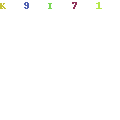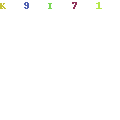On March 11, the city reported its first two cases of Covid-19. A little more than two months later, Mumbai accounts for 61.2% of the total cases in Maharashtra and has a mortality rate of 3.45% with 882 deaths, accounting for 60.6% of the state’s total deaths. Is this rise unprecedented? Has the lockdown helped and for how long should it continue?
Since May 17, when Mumbai crossed 20,000 reported cases, its daily count of new cases started crossing 1,000. On May 17, the city reported 1,545 new cases, followed by 1,185 on May 18; 1,411 on May 19; and 1,372 on May 20. As of Thursday, Mumbai has recorded 25,500 Covid-positive cases.
Officials attribute the spike to the city’s high population density, large slum population, more testing, and violating distancing guidelines. However, the authorities also said they had anticipated this trajectory at the beginning of the outbreak and expect the situation to come under control by mid-June.
When will the curve flatten?
It took 20 days for Mumbai to record 100 cases, between March 11 and March 31. Then, after 10 days, the city saw 1,000 cases on April 10. After 26 days, it crossed 10,000 cases on May 6. On May 17, the city had 20,000 reported cases.
State surveillance officer Pradip Awate said, “This trajectory of cases was anticipated. We were already studying scenarios in other countries. When the first case came to Maharashtra on March 9, Italy, Spain, France, Iran were already seeing these trends. So we had expected this kind of rise. That’s why Maharashtra announced a lockdown before the Centre.”
Municipal commissioner IS Chahal, who took charge of BMC on May 8, said last week that by the end of May, he expects 45,000 to 46,000 cases in Mumbai.
Awate pointed to the example of China, which took approximately 72 days to flatten the curve after announcing its lockdown. Mumbai is likely to take eight to 10 days longer, given the population density of its slums.
“We are already two months into the lockdown and there are 10 more days of May left. So the end of May would bring us to the 70-day mark. Let’s give Mumbai another 15 days, over and above the world average. So we are looking at mid-June for the curve to improve,” he said.
Dr Om Shrivastav, who is part of the task force appointed by the Maharashtra government in April to tackle the state’s mortality rate, reiterated that the numbers in Mumbai follow an expected trend.
“These are expected numbers, due to the pattern of the infection, trend in other countries, and for the population we have. When you test more, and adequately, you will find that the numbers increase. I don’t think we should be discouraged by a number. We should be looking at that percentage of the population who are going to require hospitalisation, intensive care, and ventilation. So long as we are able to provide services to those people, numbers in themselves mean nothing,” he said.
Reasons for high number of cases
Mumbai’s high population density and many slum pockets are among the factors contributing to the spike in reported cases along with the number of tests conducted in the city.
Awate said, “Mumbai’s biggest enemy is its density — 20,000 per sqkm, and it is much greater in slums. About 45% to 50% of the population resides in slums. Current cases are mainly coming from slums. Even when you have a lockdown, it is very difficult to religiously implement it in a slum where up to 10 people are residing in a room admeasuring 8×8 feet.”
When Maharashtra reaches 199 cases per 1 lakh in the population, Mumbai’s slums, are expected to record 550 cases per 1 lakh, said Awate, adding that this proportion varies according to economic classes.
Of the 24 wards in the city, those with the most number of Covid-19 cases also have one or more slum pockets or congested areas. For example, Dharavi is in G/North ward; Byculla and Nagpada are in E ward; Sewri and Wadala are in F/North ward; Worli Koliwada, Janata Nagar, Adarsh Nagar, and the chawls of Lower Parel are in G/South ward; Kurla is in L ward, and the slums of Govandi and Mankhurd are in M/East ward.
In wards with a comparatively lower number of cases, such as T ward in Mulund and R/North ward in Borivli, cases are usually concentrated in slum pockets.
While some citizens violating lockdown restrictions may be responsible for a small percentage of the rising numbers, Mumbai has also carried out rigorous testing, say authorities.
For every million of the population, Mumbai has conducted about 11,784 tests and altogether, 1.53 lakh tests have been conducted so far. As of May 14, when Mumbai had conducted 1.27 lakh tests, it had surpassed test figures for Gujarat, Karnataka, West Bengal, and Delhi.
Kiran Dighavkar, assistant commissioner of the G North ward, said, “People ask me why Dharavi cases are rising. Cases are a result of massive screening. We have screened as many as 4 lakh people and tested more than 3,500 people. Success shall be measured on early timely treatment, fewer deaths, and more discharges.”
Has community transmission begun?
Community transmission is formally announced by the government if two trends are noticed among positive patients: Persons testing positive despite the absence of relevant travel history and/ or contact with another positive patient, which means there is no way of tracing how the infection was contracted.
A senior official from the Brihanmumbai Municipal Corporation (BMC) said there were some early signs of community transmission in the city.
“Mumbai is getting cases in clusters, such as the Dharavi and Worli Koliwada phenomena. You cannot deny that these are early signs of community transmission,” said Awate. However, since such cases still account for less than 30% of the total number, the authorities are not saying community transmission has started.
Another civic official pointed out, “Cases from fever clinics in containment zones account for less than 1% of the total cases.” As of Wednesday, BMC has found 683 of its total positive cases from fever clinics.
Has the lockdown helped curb spread?
Officials say the lockdown is achieving its purpose of pacing out the spurt in reported cases and giving hospitals time to ramp up facilities. It is also helping develop some amount of immunity in the population in a controlled manner, without burdening healthcare facilities. “As cases rise exponentially, if there is a boom in the first few days, the situation could go out of hand. We have managed to steer away from that scenario due to the lockdown,” said one civic official.
Sanjeev Jaiswal, additional municipal commissioner, BMC, and in-charge of drawing up a post-lockdown plan for the city, said, “The city is slowly opening up. Proof of it is the increased traffic at checkpoints set up by Mumbai Police now in comparison to last month.”
He pointed out that more shops, like grocery and hardware stores, were operational. “The city will have to start opening up in a staggered manner and a decision on this will be taken after consulting the state government,” said Jaiswal.
However, for the immediate future, the lockdown remains in place. “It is not wise for Mumbai to open up so soon. We may be looking at lockdown remaining in Mumbai till the end of June, and red zones in Mumbai should not start for a few days even after that. Let the curve stabilise,” said an official.
Jaiswal said BMC was prepared for another spike in cases when restrictions ease. “We are ramping up medical facilities,” he said. “It is important that healthcare is able to handle the spurt. Then we are okay.”
Source: https://www.hindustantimes.com/mumbai-news/will-covid-curve-flatten-in-june/story-kyuMf780dPbkap75WemrCL.html



